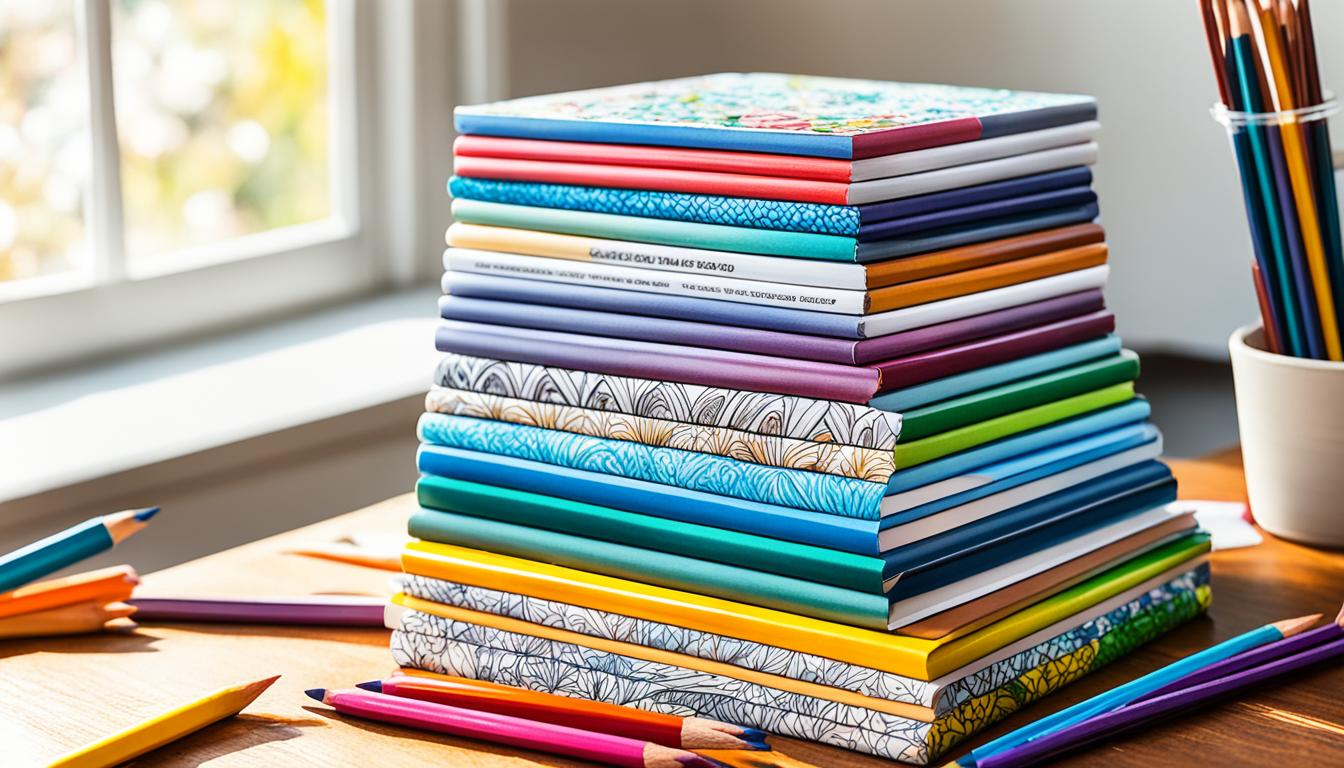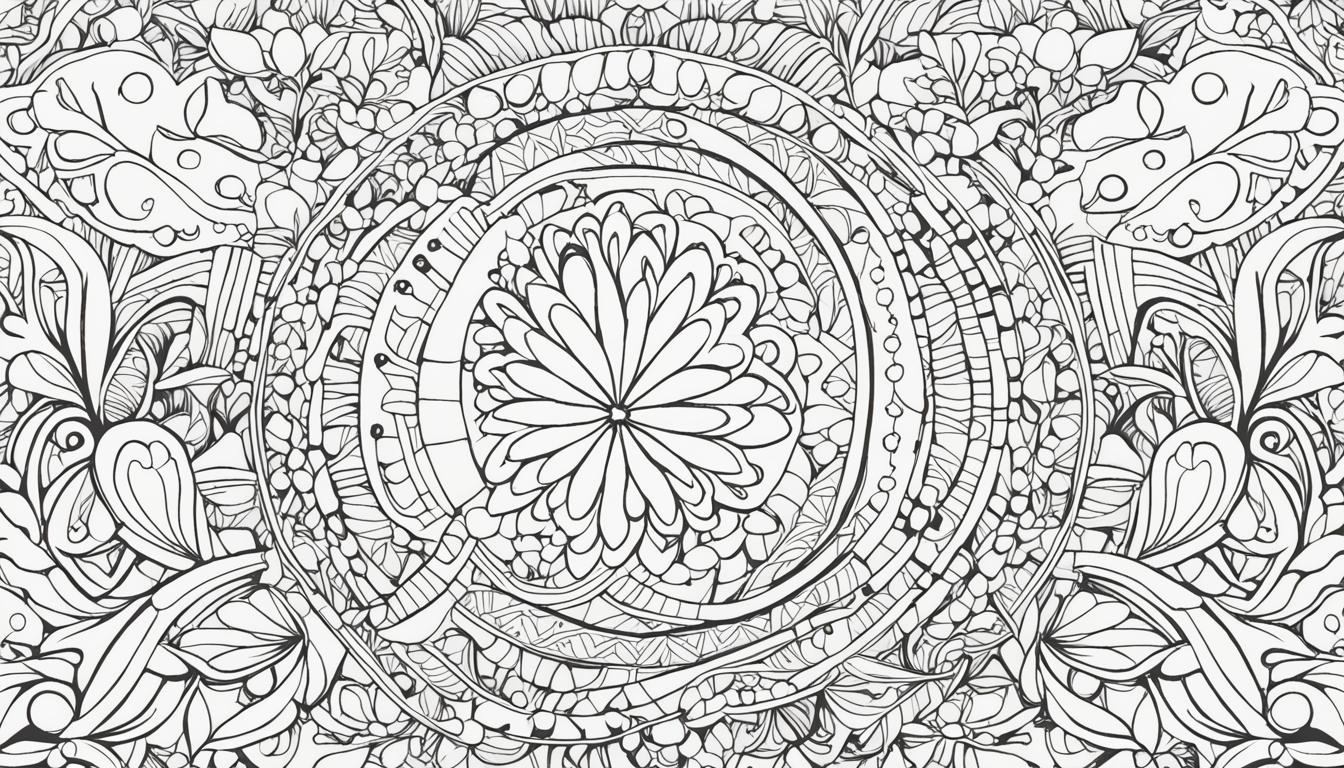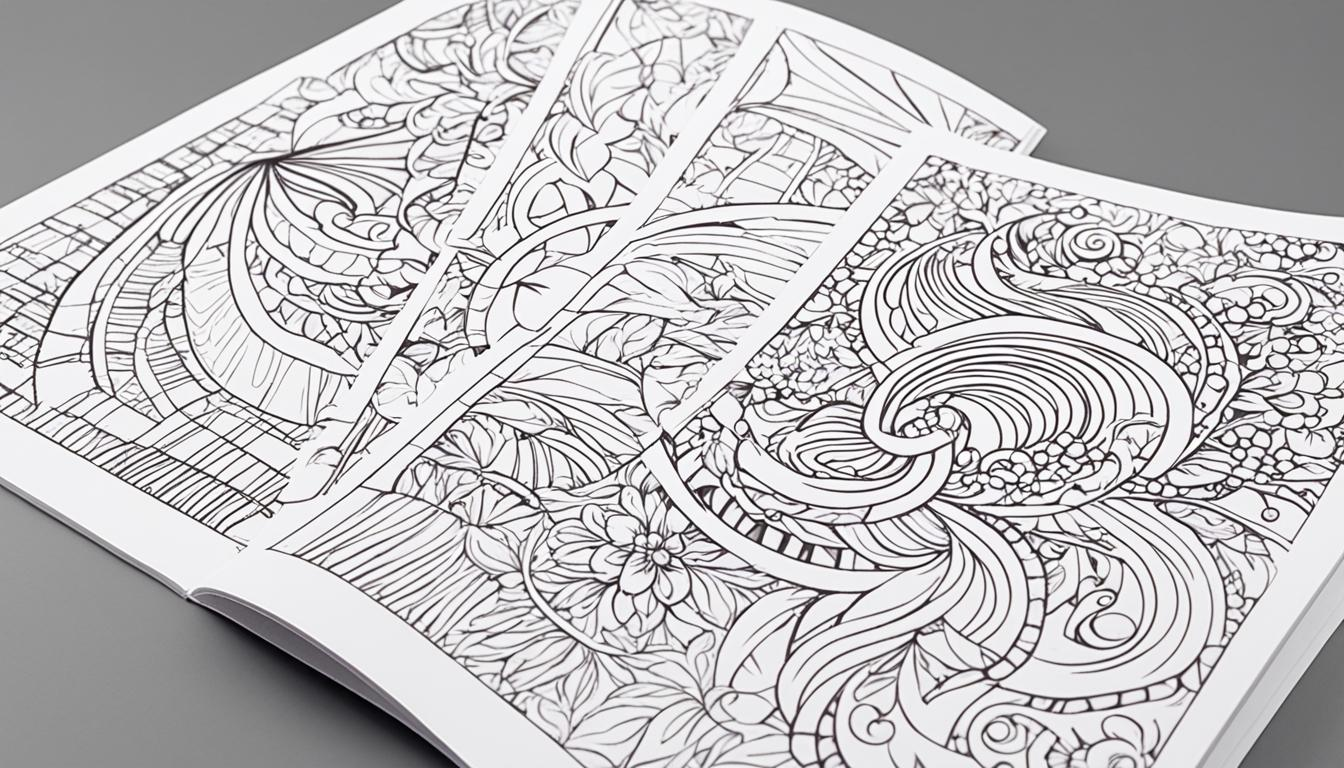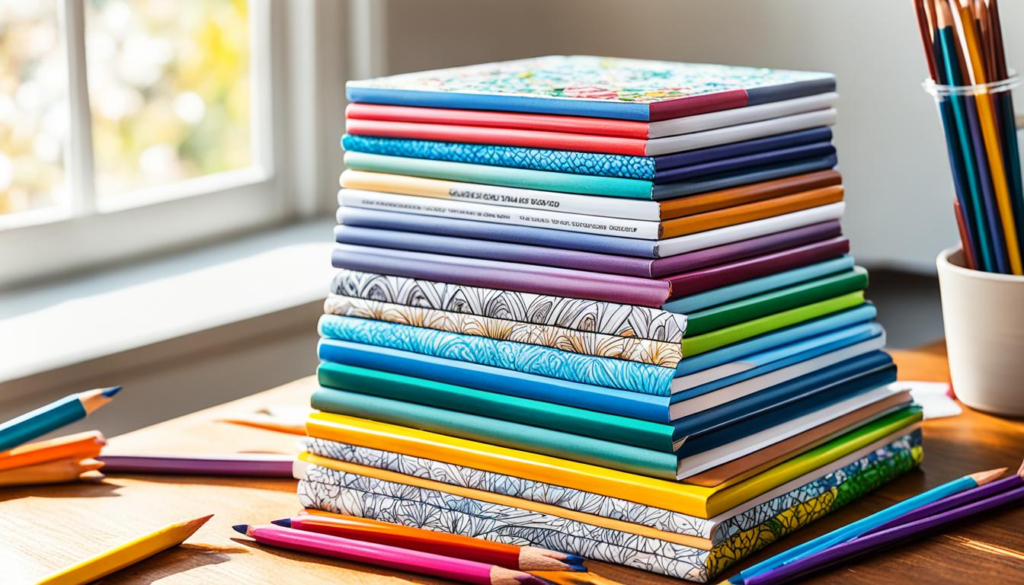In the world of colouring books, you’re in a blend of fun and peace. Coloring Books to print add to this experience, offering a variety of designs and themes. Making printing top-notch matters a lot. An artist or someone who loves art can improve their colouring books by knowing more. This guide is packed with advice to make your books even better. This way, everyone who colours in them will be glued from the start.
Colouring books are now loved by all, old or young. Designs like flowers and mandalas are super popular. With more people wanting custom books, you should think about what they like. Knowing their age, how skilled they are, and what they love helps you make books they’ll really enjoy.

There are coloring pages and coloring sheets available for various occasions and themes, such as holiday-themed sheets, adult coloring pages, and kids coloring pages. These can be used for crafts like gift bags, puzzles, wrapping paper, gift tags, greeting cards, and ornaments, as well as for making magnets, bookmarks, and journal covers.
Colouring is not just for fun; it’s also relaxing. It helps both kids and grown-ups calm down and focus better. By putting these ideas into your book designs, you can give your fans something they will love.
This article will go into the best ways to make your print colouring books awesome. We’ll talk about picking colours, the paper to use, and even how to bind them. These steps are key to making books that really shine in the market.
Transforming Coloring Books to Print Ready Artwork – Shading Techniques for Depth and Dimension
Creating great colouring pages is more than just filling the lines. It’s about depth and visual interest. Shading is key. By using shadows, highlights, and different tones, you make art pop from the page. Free coloring pages can be a great resource for practicing shading techniques.
Choosing the Right Colours
The key to good shading is picking the right colours. Instead of sharp contrasts, use tones that are close to each other. This makes a smooth gradient, adding life to your pages.
Layering and Blending Colours
Layering colours brings depth. Start light and go darker. Blend them well for a 3D effect. Try different tools like cotton buds to blend smoothly.
Using Analogous Colours
Using colours next to each other on the wheel can make your shading stand out. Blues, greens, and teals work well together. Layer and blend these colours for a unified, beautiful look.
Adding Highlights with a White Pen
Using a high-quality white pen is great for enhancing your colouring pages, especially for older children who want to add more intricate details. You can make edges stand out, add detailed patterns, and give your drawings texture. They’re really versatile.
Accentuating Edges and Patterns
Sakura Gellyroll white pens are perfect for highlighting edges and adding little touches to your pictures. For example, you can outline the edges of flowers or an item to draw attention to it. This makes them really pop against the colours.
Creating Texture and Depth
White pens aren’t just for outlining. You can use them to make patterns and textures in the background. Try using different techniques like dotting and hatching. This adds depth and makes your colouring pages more interesting.
Embellishing with a Black Pen
Unleash your creativity! Transform basic colouring pages into stunning designs. Use the power of a black pen. This tool adds depth and detail. It’ll take your colouring book joy to new levels.
Adding Patterns and Details
With a black pen, you can explore endless options. Introduce intricate patterns and details. From gentle dots to bold shapes, it brings life to simple designs. Try hatching, cross-hatching, and stippling for amazing effects. Your colouring pages will be full of character.
Creating Textures
A black pen isn’t just for patterns and details. It can also make cool textures. Use scribbling, brushwork, or abstract markmaking. This adds depth to your art. Experiment with different lines and techniques. This will make your designs truly stand out.
Coloring Book to Print : Understanding Your Audience
When making a colouring book, knowing who you’re aiming for is key. People of different ages and abilities like different things. This includes how complex the design is and what the theme is about. By thinking about this, your book will be a hit with the right crowd.
Considering Age and Skill Level
Kids and adults like colouring for different reasons. Kids enjoy simple, bright designs about things they love, like animals or princesses. Adults might prefer more intricate designs, like mandalas or patterns based on nature. This lets them get creative with the details.
Gathering Feedback and Insights
Feedback from surveys or talking to others in the field is really helpful. This feedback can tell you what themes and styles would attract your audience. Listening to your audience and using their feedback can make your book more popular.
Planning and Designing Your Coloring Books to Print
When creating a colouring book, it’s key to consider book printing as an essential part of the planning and designing process. Knowing what your target group likes will make your book more appealing. Using uncoated paper can enhance the coloring experience by providing better ink absorption and a tactile feel. This way, you make sure the users enjoy and connect with your book.
Choosing a Theme
First, pick a theme that your audience will love. It might be about nature, animals, favourite characters, or even about calm and uplifting themes. You could ask people or do surveys to find out what they prefer.
Incorporating Variety and Interest
Make your book fun and varied with different designs and levels of difficulty. Use both simple and detailed pictures, covering various topics and styles. Changing the page setups and adding secret elements make the experience more exciting for users.
Adding Inspiring Messages and Hidden Elements
It’s a great idea to include uplifting messages in your book. You can hide positive words, sayings, or patterns in the pictures. When these are found and coloured, they make the user feel good and successful. This adds to the joy of using your colouring book.
Selecting the Optimal Size
Choosing the right size for your colouring book matters a lot. The usual size is 8.5 x 11 inches, but you can find others. Options like 8×8 inches, 9×12 inches, and 11×14 inches are out there too. Think about what size will give the best experience and fit your budget.
Considering Portability and Ease of Use
Think about if you’ll take your colouring book places. Small sizes, like 8×8 inches, are easy to carry. You can put it in a bag and have fun colouring anywhere. But maybe you want more space for detailed colouring. In that case, a larger book, like 11×14 inches, might be better.
Balancing Production Costs
Size also affects how much it costs to make the book. Bigger books use more paper and materials, so they cost more. It’s important to pick a size that fits what your users want but doesn’t blow your budget. This way, you can create a book that’s both enjoyable and affordable.

Choosing the Right Paper for your Coloring Books to Print
The right paper is key for great colouring books. The choice of paper is very important for the book’s quality and how people enjoy it. Paper’s weight, feel, and vibrant colours all matter a lot for the final look.
Paper Weight and Thickness
When picking paper for colouring books, go for heavy and thick options. Look for papers between 100 to 150 GSM. This weight stops colours from seeping through, making your book sturdier. Thicker paper also feels nicer to use and lasts longer, surviving many colouring sessions.
Paper Texture and Colour Vibrancy
How the paper feels impacts your colouring. Smooth papers give a sleek look, and rougher ones add depth to your art. The paper colour affects how bold your colours look. Choose a paper that makes your book style shine, enhancing its beauty.
Durability and Environmental Considerations
For books used often or by many, durability is vital. Pick a paper that stays in top shape after lots of colouring. Also, think about the planet by choosing eco-friendly paper. This supports the green choices of many modern colouring fans.
Binding Options for Coloring Books to Print
Choosing the right binding for your colouring books is crucial. It affects quality, how long the book lasts, and how easy it is to use. Below, we’ll look at the different ways to bind, each suited for varied needs.
Perfect Binding
Perfect binding is great for colouring books with lots of pages. It’s also called trade binding. Pages get glued to the spine, giving a neat and pro finish. It’s best for thicker books, say, 48 pages or more, especially with pages that aren’t too thick.
Saddle Stitch Binding
Saddle stitching is cheaper and fits well for thinner colouring books. Here, the book’s folded in half and stapled at the spine, providing benefits such as an anti-crease square edge and no cracking at the spine. It’s a simple and budget-friendly way to put a book together. This suits books with fewer than 48 pages perfectly.
Spiral Coil and Wire-O Binding
For luxury colouring books, spiral coil and Wire-O binding stand out. They use coil or wire that lets the book lay flat. This means easy page-turning. These bindings are for special, high-quality books with unique features.

Preparing Your Designs for to begin getting your Coloring Books to Print Ready Artwork
Before printing your colouring book designs, make sure they’re ready. It’s key to change your drawings or digital art into top-quality files, like JPEG or PNG, at 300 dpi. Doing this ensures your prints look sharp and vibrant, matching your creative vision well.
Converting Artwork to High-Quality Files
Choosing the right file type and resolution matters a lot in printing. Save your designs as JPEG or PNG at 300 dpi at least. This makes sure your colouring pages print clearly and colourfully, improving your users’ experience.
Determining Print Quantity
Finding the right print amount for your book is also crucial. Thinking about demand and who your book’s for can reduce production costs and avoid having unsold copies. Finding the right balance makes your book both affordable and available to your target market.
Working with a Professional Printing Company to get your Coloring Books to Print
Working with a good printing company can change the whole game. It makes the production and distribution of your book smoother. With experts handling the technical parts, you can focus more on being creative, ensuring your book gets to your fans smoothly.
Conclusion
In this guide, we’ve shared many tips for creators in Australia. We covered shading, adding details, and choosing the right paper and binding. These elements can make a colouring book more enjoyable and engaging.
Are you an artist or just love colouring? This article gives you a plan to make your colouring books better. Learn about colours, improve how you shade, and choose the best paper and binding.
The artwork’s quality isn’t the only important thing in a colouring book. You must also pay attention to details and know who you are making it for. With these tips, you can make books that spark creativity and joy in Australia.









